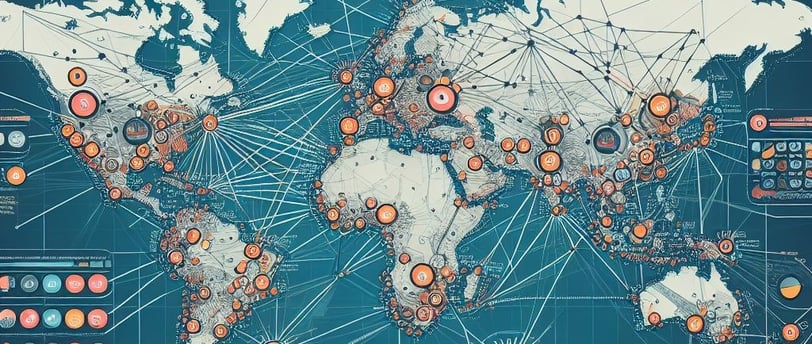StingrayLink: What to Expect in the Supply Chain Landscape in 2025
What is to come.
Omar Rebaza
1/18/20242 min read


I know we just started 2024; this is our first post for 2025 already, the supply chain landscape is poised for significant transformation. The intersection of technology, sustainability, and global dynamics is reshaping the way businesses approach supply chain management. In this blog, we'll explore key trends and expectations for the supply chain in 2025.
Digitalization and Industry 4.0: The integration of advanced technologies will continue to redefine supply chain processes. Automation, artificial intelligence, and the Internet of Things (IoT) will play pivotal roles in optimizing operations. Smart factories, connected logistics, and real-time data analytics will become standard, enhancing efficiency and responsiveness across the supply chain.
Resilience and Risk Management: Global events, such as the recent pandemic, have underscored the importance of building resilient supply chains. In 2025, businesses will prioritize risk management strategies, diversifying suppliers, and leveraging data-driven insights to proactively address potential disruptions. Resilient supply chains will be characterized by flexibility, visibility, and the ability to adapt swiftly to unforeseen challenges.
Sustainability and Eco-Friendly Practices: Environmental sustainability will take center stage in the supply chain. Companies will increasingly adopt eco-friendly practices, embracing circular economy principles, reducing carbon footprints, and prioritizing sustainable sourcing. Consumers' demand for ethically produced goods will drive businesses to integrate sustainability into every aspect of their supply chain.
Supply Chain Visibility and Transparency: Transparency will be a non-negotiable aspect of supply chain management. Customers, regulators, and stakeholders will expect real-time visibility into the entire supply chain, from sourcing to delivery. Blockchain technology will play a role in ensuring transparency, traceability, and accountability, particularly in industries where authenticity and compliance are critical.
Customer-Centricity and Personalization: The supply chain in 2025 will be increasingly customer-centric. Businesses will leverage data analytics and AI to understand consumer preferences, enabling personalized and on-demand manufacturing. Quick response times, flexible fulfillment options, and a seamless customer experience will be paramount to staying competitive in an evolving market.
Last-Mile Innovation: Last-mile delivery challenges will continue to drive innovation. Drones, autonomous vehicles, and robotics will become more prevalent in last-mile logistics, enhancing speed and efficiency. Urban logistics solutions, such as micro-fulfillment centers, will address the complexities of delivering goods in densely populated areas.
Global Trade Dynamics: In 2025, supply chains will continue to adapt to shifting global trade dynamics. The emphasis on regionalization and nearshoring will increase as businesses seek to reduce dependence on distant suppliers and navigate geopolitical uncertainties. The trade landscape will be influenced by evolving trade policies, tariff structures, and geopolitical relationships.
Talent and Skill Development: The supply chain workforce of 2025 will require a diverse set of skills. As technology becomes more integral to operations, there will be a growing demand for professionals skilled in data analytics, AI, and digital technologies. Continuous learning and development programs will be essential to keep supply chain teams abreast of evolving industry trends.
The supply chain of 2025 is poised to be a dynamic and technologically advanced ecosystem. Businesses that embrace digitalization, prioritize sustainability, enhance visibility, and remain agile in the face of change will position themselves for success. Navigating the future of the supply chain requires a proactive approach, a commitment to innovation, and a strategic focus on meeting the evolving needs of consumers and the global market.
